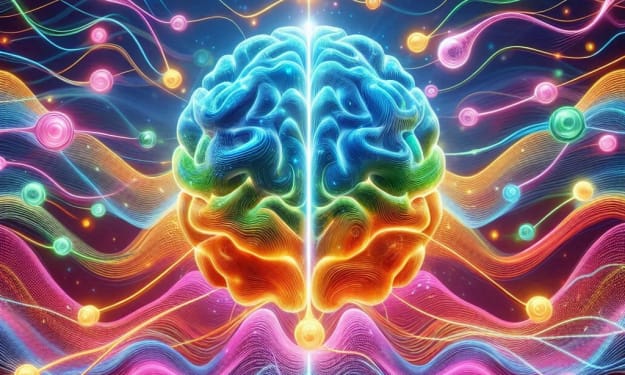AI and the Future of Creativity
Investigating the Point Where Artificial Intelligence and Human Imagination Collide

Artificial intelligence (AI) is starting to play a major role in many different areas, including as manufacturing, healthcare, and finance. But the field of creativity is one of the most fascinating—and frequently controversial—areas where AI is starting to have an impact. As AI systems get more advanced, they are participating in creative activities that have historically been performed by people in addition to automating monotonous chores. The nature of creativity, the place of human artists, and the moral ramifications of AI-driven creativity are some of the important issues this breakthrough brings up.
The Evolution of AI in Creative Fields
Over the past ten years, AI's application in creative fields has significantly changed. AI systems were first used to help with technical creative tasks like improving image quality or creating music according to preset guidelines. But because to developments in neural networks and machine learning, artificial intelligence can already create creative material on its own.
For example, with only basic cues, OpenAI's GPT-3 language model can produce text that appears human. It is capable of writing stories, poems, and even intricate technical essays. In a similar vein, AI systems such as DeepArt and DALL-E produce visual art by either emulating the techniques of well-known painters or by developing completely original artistic conceptions from written descriptions【6†source】【7†source】.
Is AI-Generated Art Truly Creative or Just Novel?
Is art created by AI truly creative? This is one of the main questions surrounding AI and creativity. It has long been believed that creativity is a quality that only humans possess; it is the capacity to generate original, valuable concepts or works of art. AI is criticized for lacking consciousness and emotional complexity, which are necessary for genuine creation. They claim that AI cannot generate something essentially new from an emotional or experience base; it can only recombine existing data in creative ways‐6†source].
However, supporters point out that AI's capacity to analyze enormous volumes of data and spot patterns can produce novel results that humans could not have thought of. Artworks produced by artificial intelligence, including those produced by the AICAN software, have been shown in galleries and even auctioned off at prestigious events. These pieces frequently straddle the boundary between artificial and human invention, raising questions about what constitutes creative uniqueness and worth【6†source】】7†source】.
Collaboration Between AI and Human Creators
Several academics support a cooperative approach rather than seeing AI as a rival to human ingenuity. AI has the potential to be a potent instrument that expands human creativity by offering fresh insights and functionalities.
AI is used by authors to overcome writer's block and come up with new ideas, and by musicians to experiment with new sounds and songs. A noteworthy instance of such a collaboration is the alliance formed by musician David Cope with Emily Howell, his artificial intelligence system. Cope creates musical compositions with Emily Howell, which he then polishes and customizes. Cope is able to investigate musical possibilities that would not have been possible without this synergy【6†source】. Similarly, to produce immersive, data-driven artworks, visual artists such as Refik Anadol integrate AI into their creative processes. Pushing the limits of digital art, Anadol's work frequently entails putting massive datasets into AI algorithms to produce breathtaking visual representations【6†source】.
The Impact on Creative Industries
There are significant ramifications for the creative industries when AI is integrated. On the one hand, technology democratizes creativity by giving those who might not have traditional creative abilities access to strong tools. The entrance barrier for aspiring artists and content creators is lowered by AI platforms like Canva and Runway ML, which let anyone to produce professional-quality graphics and films with little effort【6†source】【7†source】.
However, there are worries about job displacement and the diminishing value of human creativity due to the growing popularity of AI-generated material. Human artists and creators run the danger of finding it more difficult to compete as AI systems get better at creating high-quality content. This possible change may cause us to reexamine what it means to be a working artist in a time when literature and the arts can be produced by machines【6†source】.
Ethical Considerations and the Future
The increasing use of AI in creative industries also highlights ethical issues. The ownership and authorship of works created by AI remain unresolved. For example, who is the copyright holder of an AI-created work of art? Who is to blame—the AI itself, the programmer, or the user who submitted the data? As AI develops further, these issues with substantial legal and financial ramifications must be resolved【6†source】】7†source】.
Furthermore, there is worry that AI could reinforce and magnify preexisting biases. Large datasets that frequently represent societal prejudices are used to train AI systems, which can lead to biased outputs. To prevent damaging preconceptions and inequities from being reinforced, it is imperative that AI-generated content is equitable and inclusive【7†source】.
Conclusion
Without a question, artificial intelligence (AI) is changing the creative scene by providing writers, musicians, and artists with new tools and opportunities. Even while there are legitimate worries about the effects of AI-driven creativity, it's important to acknowledge that AI has the ability to both support and improve human creativity. We may use AI to stimulate creativity and advance our creative activities by adopting a cooperative strategy and proactively addressing ethical concerns. AI-enhanced creativity promises to be a dynamic and fascinating new frontier that will fundamentally alter our perception of art and human expression in the future.
About the Creator
Enjoyed the story? Support the Creator.
Subscribe for free to receive all their stories in your feed. You could also pledge your support or give them a one-off tip, letting them know you appreciate their work.





Comments (1)
Mesmerizing .Love it.